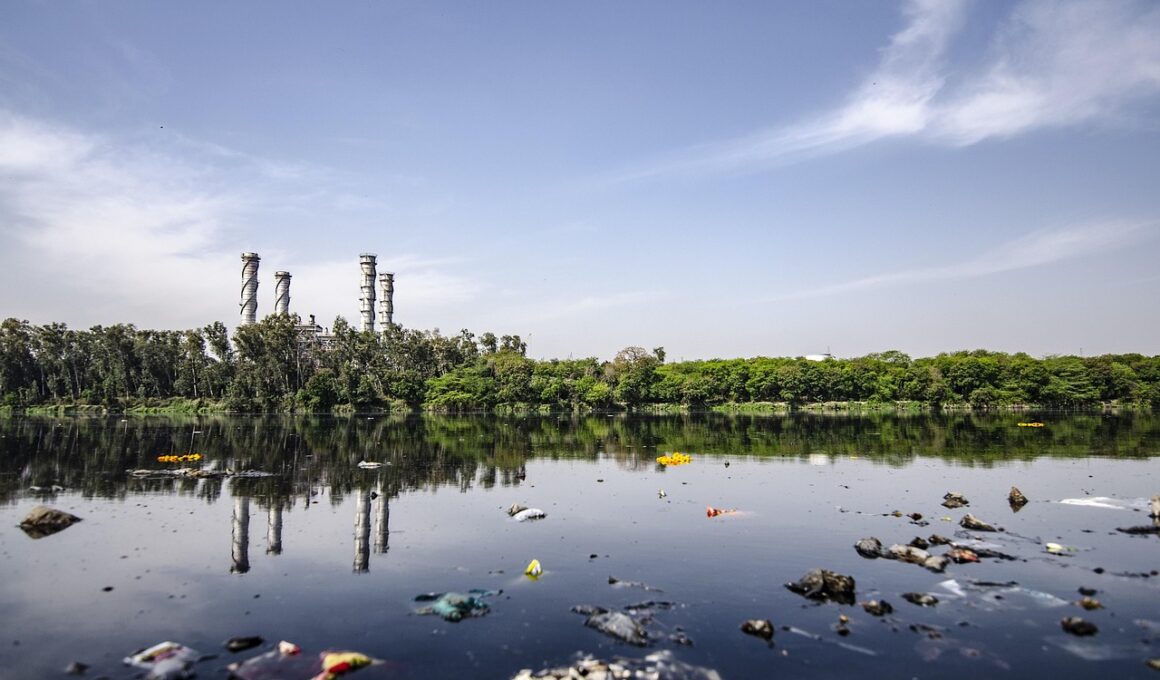The Environmental Fitness Movement: Fighting Water Pollution for Future Generations
Water pollution is a pressing issue that has detrimental impacts on both humans and ecosystems. As our population continues to grow, the demand for clean water has intensified, making pollution prevention essential. Pollutants such as industrial waste, agricultural runoff, and plastic debris contaminate water bodies, affecting aquatic life and drinking supplies. Various organizations are focusing on creating awareness and implementing solutions to combat this crisis. By adopting eco-friendly practices and innovative technologies, we can better protect our waterways. Encouraging community involvement is vital; local initiatives can foster sustainable habits and responsibility among citizens. Furthermore, stringent regulations on waste disposal processes can help industries reduce their environmental footprints. Knowledge-sharing platforms play a significant role in educating the public about water conservation strategies. Through effective advocacy, change can be accelerated, leading to healthier water systems. Various technologies, such as filtration systems and bioremediation, are being utilized to cleanse polluted water bodies. Collective efforts at individual and governmental levels can significantly diminish water pollution. With the right actions, we can ensure clean water is available for generations to come and preserve our invaluable aquatic ecosystems.
Understanding the Sources of Water Pollution
To effectively address water pollution, understanding its sources is crucial. Major contributors include agricultural runoff, wastewater effluent, and stormwater runoff. Fertilizers and pesticides used in farming lead to nutrient pollution, causing algae blooms that harm water bodies. Urban environments exacerbate this issue through stormwater drainages that collect pollutants and deliver them directly to rivers and lakes. Industrial discharges also introduce toxic materials into the water supply, harming aquatic life and ultimately human health. Additionally, improper waste disposal results in plastics and chemicals contaminating our water systems. People often underestimate the impact of small actions, such as littering or using single-use plastics, which accumulate and degrade water quality. Moreover, climate change can exacerbate these issues; increased rainfall can lead to flooding, washing more pollutants into water bodies. By recognizing these sources, proactive measures can be implemented to mitigate their impacts. Communities must advocate for greener agricultural practices and better urban management. Public education campaigns can instill a sense of responsibility among individuals to reduce their contributions to water pollution. By targeting these sources, we can create action plans to restore and protect our water resources.
The Role of Legislation in Water Protection
Legislation is a powerful tool in the fight against water pollution. Various laws and regulations aim to regulate waste disposal, protect endangered species, and ensure clean drinking water. The Clean Water Act in the United States sets standards for pollutant discharges and supports the restoration of water quality. International agreements, such as the Paris Agreement, focus on combating climate change, which heavily influences water pollution levels. However, the enforcement of these regulations often faces challenges due to lack of funding, political will, or public awareness. Without adequate enforcement, industries may continue harmful practices that degrade water quality. Regular assessments and updates to environmental regulations are necessary to ensure they address current challenges and emerging threats. Additionally, fostering collaboration between government, industry, and non-profit organizations can enhance compliance and stimulate innovation in water protection technologies. Public participation in policy-making can drive change and improve enforcement. Grassroots movements have successfully influenced water policies in numerous regions, demonstrating the effectiveness of citizen engagement. By advocating for strong legislation, we can create a robust framework that effectively protects our precious water resources for future generations.
Community initiatives significantly impact the battle against water pollution. Local clean-up activities bring people together to directly address pollution in their environments. These initiatives foster a sense of ownership and responsibility among participants, encouraging individuals to care for their surroundings. Schools play an important role in educating students about water conservation and pollution prevention strategies. Programs that incorporate hands-on learning can inspire future generations to remain committed to environmental stewardship. Additionally, partnerships with local government and organizations can help facilitate the implementation of beneficial policies. Community gardens and green spaces can capture stormwater runoff and improve local water quality while promoting biodiversity. Social media campaigns are also powerful in raising awareness about water-related issues, making it easier for communities to mobilize around shared causes. Engaging storytelling can spread the message further, motivating others to take action. Moreover, educators and activists can collaborate to create informational materials that highlight successful local projects. By consistently promoting these initiatives, we can amplify their positive impact and foster a culture of environmental fitness. Community-driven efforts are essential in cultivating a society committed to protecting water resources and ensuring clean water access for all.
Education plays a crucial role in combating water pollution by fostering awareness and understanding. Schools, universities, and community organizations contribute significantly to this mission by providing information on water conservation and pollution effects. Programs designed for students often include interactive experiences that build a connection with nature and instill a responsibility for protecting it. Engaging workshops and hands-on projects can further solidify knowledge, encouraging proactive behavior towards environmental health. Resources such as online tutorials, seminars, and public lectures can extend learning opportunities beyond traditional classrooms. Understanding the consequences of polluted waters encourages individuals to adopt sustainable practices, such as reduced plastic use and better waste management. Collaboration between educational institutions and environmental organizations allows the development of curricula that are relevant and impactful. Hosting competitions and events can also stimulate interest in water conservation efforts. Furthermore, educators can emphasize the importance of legislation and community efforts to reinforce learning. By prioritizing education around water pollution, we equip individuals with the knowledge they need to take action and advocate for cleaner water systems. Investing in education fosters long-term change, leading to a generation dedicated to protecting this vital resource.
Technology and innovation are increasingly essential in the pursuit of cleaner water. Advancements in water purification technologies have progressed significantly, offering new solutions to address pollution challenges. Techniques like nanofiltration and advanced oxidation processes can efficiently remove contaminants from water sources. Innovative monitoring systems allow real-time assessment of water quality, enabling swift responses to pollution incidents. Furthermore, the integration of data analytics and artificial intelligence can improve predictive capabilities, helping stakeholders manage water resources proactively. Community-led initiatives can utilize these technological advancements to launch localized solutions tailored to their specific needs. For example, rainwater harvesting systems can provide communities with alternative water sources while reducing runoff pollution. Innovative recycling methods can also minimize the volume of wastewater entering water bodies, further protecting local ecosystems. Collaborations between tech companies, academia, and environmental NGOs can catalyze new ideas and approaches for tackling water pollution. As these collaborations flourish, we can expect a surge in groundbreaking technologies that can transform our efforts in maintaining clean water supplies. Embracing technology is vital for creating sustainable solutions that will benefit current and future generations.
In conclusion, the fight against water pollution is vital for safeguarding our health and that of our environment. Through collective actions, legislative measures, community engagement, and educational endeavors, we can significantly reduce pollution levels. Understanding the sources and effects is essential in choosing effective solutions. Continued advocacy and innovation are crucial components of this movement. By prioritizing clean water, we can ensure the sustainability of our aquatic ecosystems for future generations. Continued efforts will require collaboration among individuals, organizations, and governments at all levels. The Environmental Fitness Movement champions the need for ongoing awareness and commitment to water protection strategies. Our choices today directly affect the health of the planet tomorrow; therefore, encouraging responsible habits and sustainable practices is imperative. Active community and individual involvement can lead to substantial changes in water quality. Every action counts, no matter how small. With shared responsibility and collective hope, we can tackle the pressing challenge of water pollution. The future of our water systems depends on the actions we take today. Through resilience and determination, we can achieve cleaner water for all.


